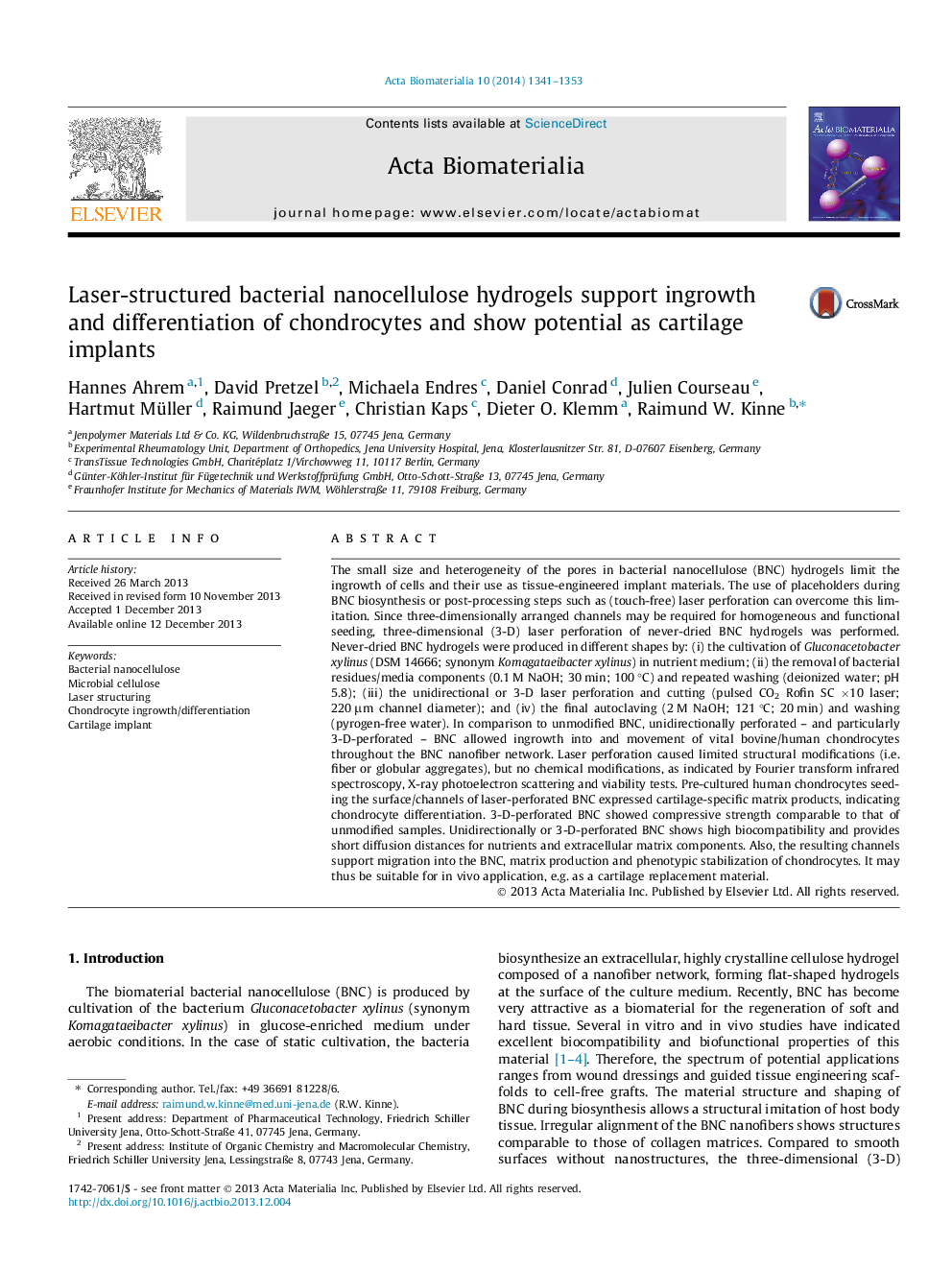| کد مقاله | کد نشریه | سال انتشار | مقاله انگلیسی | نسخه تمام متن |
|---|---|---|---|---|
| 10159286 | 41 | 2014 | 13 صفحه PDF | دانلود رایگان |
عنوان انگلیسی مقاله ISI
Laser-structured bacterial nanocellulose hydrogels support ingrowth and differentiation of chondrocytes and show potential as cartilage implants
ترجمه فارسی عنوان
هیدروژلهای نانو سلولهای باکتریایی با ساختار لیزری از رشد و تمایز کانادایی ها حمایت می کنند و پتانسیل آن را به عنوان ایمپلنت های غضروف نشان می دهند
دانلود مقاله + سفارش ترجمه
دانلود مقاله ISI انگلیسی
رایگان برای ایرانیان
کلمات کلیدی
موضوعات مرتبط
مهندسی و علوم پایه
مهندسی شیمی
بیو مهندسی (مهندسی زیستی)
چکیده انگلیسی
The small size and heterogeneity of the pores in bacterial nanocellulose (BNC) hydrogels limit the ingrowth of cells and their use as tissue-engineered implant materials. The use of placeholders during BNC biosynthesis or post-processing steps such as (touch-free) laser perforation can overcome this limitation. Since three-dimensionally arranged channels may be required for homogeneous and functional seeding, three-dimensional (3-D) laser perforation of never-dried BNC hydrogels was performed. Never-dried BNC hydrogels were produced in different shapes by: (i) the cultivation of Gluconacetobacter xylinus (DSM 14666; synonym Komagataeibacter xylinus) in nutrient medium; (ii) the removal of bacterial residues/media components (0.1 M NaOH; 30 min; 100 °C) and repeated washing (deionized water; pH 5.8); (iii) the unidirectional or 3-D laser perforation and cutting (pulsed CO2 Rofin SC Ã10 laser; 220 μm channel diameter); and (iv) the final autoclaving (2 M NaOH; 121 °C; 20 min) and washing (pyrogen-free water). In comparison to unmodified BNC, unidirectionally perforated - and particularly 3-D-perforated - BNC allowed ingrowth into and movement of vital bovine/human chondrocytes throughout the BNC nanofiber network. Laser perforation caused limited structural modifications (i.e. fiber or globular aggregates), but no chemical modifications, as indicated by Fourier transform infrared spectroscopy, X-ray photoelectron scattering and viability tests. Pre-cultured human chondrocytes seeding the surface/channels of laser-perforated BNC expressed cartilage-specific matrix products, indicating chondrocyte differentiation. 3-D-perforated BNC showed compressive strength comparable to that of unmodified samples. Unidirectionally or 3-D-perforated BNC shows high biocompatibility and provides short diffusion distances for nutrients and extracellular matrix components. Also, the resulting channels support migration into the BNC, matrix production and phenotypic stabilization of chondrocytes. It may thus be suitable for in vivo application, e.g. as a cartilage replacement material.
ناشر
Database: Elsevier - ScienceDirect (ساینس دایرکت)
Journal: Acta Biomaterialia - Volume 10, Issue 3, March 2014, Pages 1341-1353
Journal: Acta Biomaterialia - Volume 10, Issue 3, March 2014, Pages 1341-1353
نویسندگان
Hannes Ahrem, David Pretzel, Michaela Endres, Daniel Conrad, Julien Courseau, Hartmut Müller, Raimund Jaeger, Christian Kaps, Dieter O. Klemm, Raimund W. Kinne,
